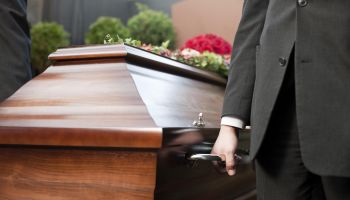
Centers for Disease Control has issued guidelines to U.S. funeral homes on how to handle the remains of Ebola patients. If the outbreak of the potentially deadly virus is in West Africa, why are funeral homes in America being given guidelines?
The three-page list of recommendations include instructing funeral workers to wear protective equipment when dealing with the remains since Ebola can be transmitted in postmortem care. It also instructs to avoid autopsies and embalming. There will also be no viewing of the body as they remains need to be sealed inside.
The other particulars are as follows:
- Only personnel trained in handling infected human remains, and wearing PPE, should touch, or move, any Ebola-infected remains.
- Handling of human remains should be kept to a minimum.
- Autopsies on patients who die of Ebola should be avoided. If an autopsy is necessary, the state health department and CDC should be consulted regarding additional precautions.
Details for receiving and delivering of the body are detailed as well.
Prior to contact with body, postmortem care personnel must wear PPE consisting of: surgical scrub suit, surgical cap, impervious gown with full sleeve coverage, eye protection (e.g., face shield, goggles), facemask, shoe covers, and double surgical gloves. Additional PPE (leg coverings, apron) might be required in certain situations (e.g., copious amounts of blood, vomit, feces, or other body fluids that can contaminate the environment). Putting on, wearing, removing, and disposing of protective equipment: PPE should be in place BEFORE contact with the body, worn during the process of collection and placement in body bags, and should be removed immediately after and discarded appropriately (see Interim Guidance for Environmental Infection Control in Hospitals for Ebola Virus). Use caution when removing PPE as to avoid contaminating the wearer. Hand hygiene (washing your hands thoroughly with soap and water or an alcohol based hand rub) should be performed immediately following the removal of PPE. If hands are visibly soiled, use soap and water.
There are instructions for handling of the deceased body before they are delivered to the morgue as well. Prior to transport to the morgue, perform surface decontamination of the corpse-containing body bags by removing visible soil on outer bag surfaces with EPA-registered disinfectants which can kill a wide range of viruses. Follow the product’s label instructions. the visible soil has been removed, reapply the disinfectant to the entire bag surface and allow to air dry. Following the removal of the body, the patient room should be cleaned and disinfected. Reusable equipment should be cleaned and disinfected according to standard procedures.
Funerals will be quick.
- Do not perform embalming. The risks of occupational exposure to Ebola virus while embalming outweighs its advantages; therefore, bodies infected with Ebola virus should not be embalmed.
- Do not open the body bags.
- Do not remove remains from the body bags. Bagged bodies should be placed directly into a hermetically sealed casket.
- Mortuary care personnel should wear PPE listed above (surgical scrub suit, surgical cap, impervious gown with full sleeve coverage, eye protection (e.g., face shield, goggles), facemask, shoe covers, and double surgical gloves) when handling the bagged remains.
- In the event of leakage of fluids from the body bag, thoroughly clean and decontaminate areas of the environment with EPA-registered disinfectants which can kill a broad range of viruses in accordance with label instructions.
Procedures are now in place to secure security and dignity of all involved.
Make sure to read
- Thomas Eric Duncan, Texas Ebola Patient, Has Died
- Don Lemon Says It’s Time To Think About Limiting Access From Ebola Ravaged Countries Into The U.S.
- What Ebola Is And Isn’t
Reality Check: CDC Issues Ebola Guidelines For U.S. Funeral Homes was originally published on elev8.com















